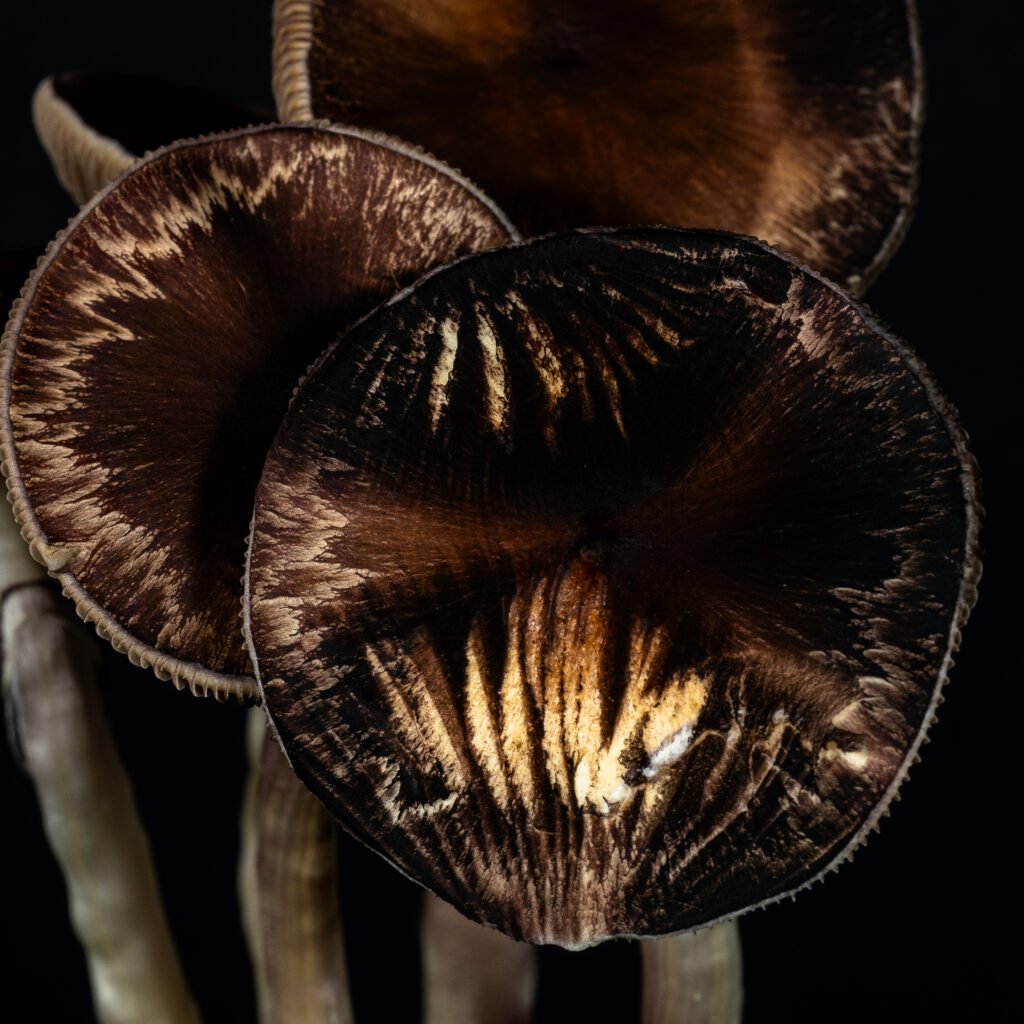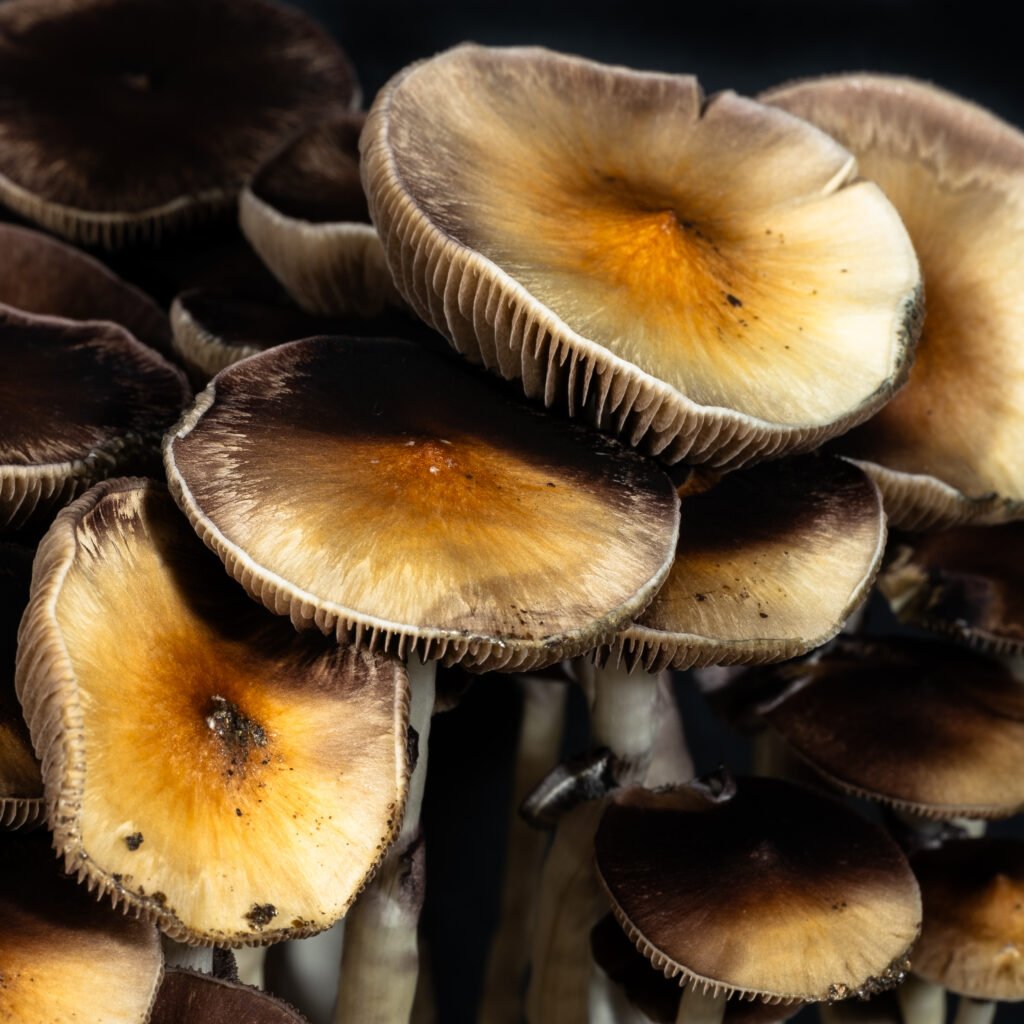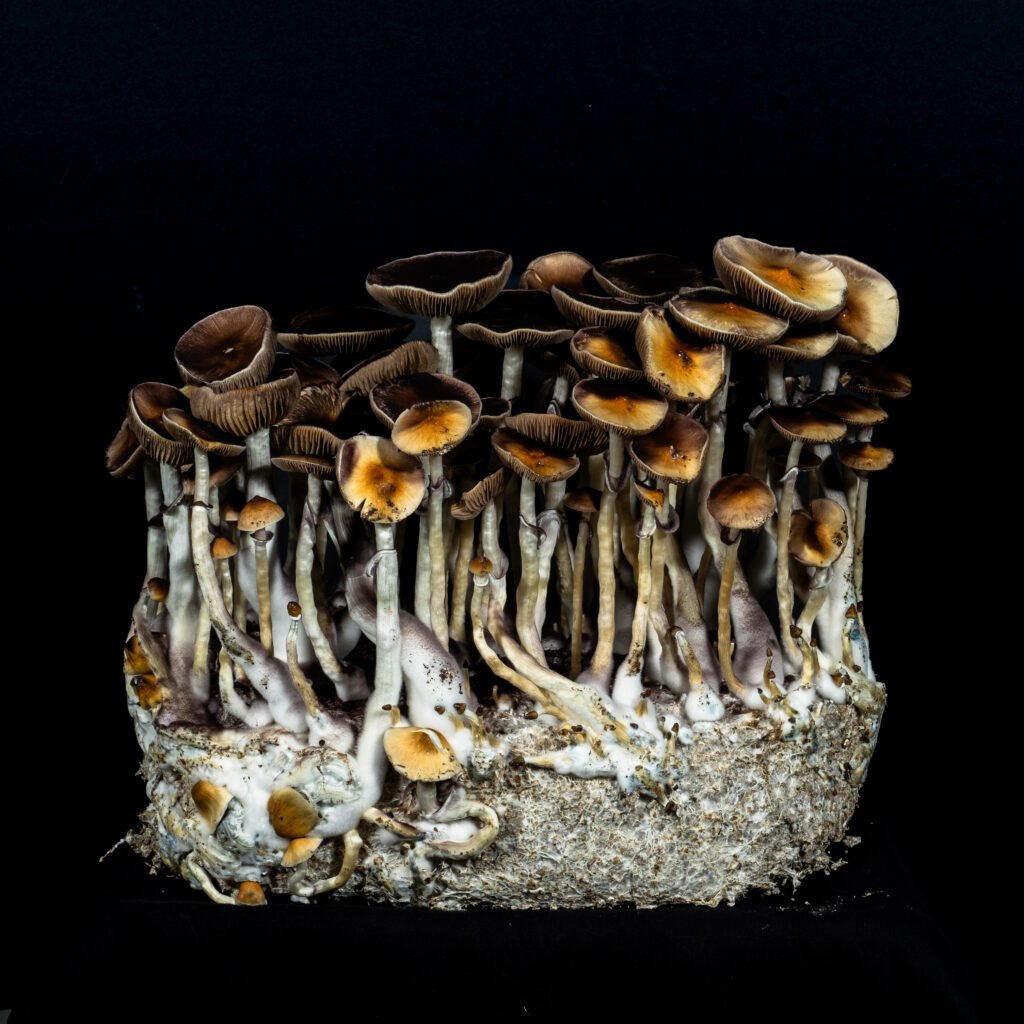Inca Star Gazer Mushroom
The Inca Star Gazer: A Unique Psilocybe Cubensis Mushroom
The Inca Star Gazer, also known as “star gazers,” originates from South America. This psilocybe cubensis mushroom strain grows in dense groups along the Andes mountain chain. The ancient Inca tribe used this mushroom for spiritual rituals.

One rumor suggests that Paul Stamets, a famous American mycologist, noted the vigorous growth potential of the Star Gazer in his book “The Mushroom Cultivator” back in the 1970s. Although Star Gazer was not explicitly mentioned in his literature, this mushroom strain has gained significant notoriety in recent years.
Physical Characteristics
At first glance, the Inca Star Gazer has a classic appearance with a golden cap and a bright white stem. One primary difference is the amount of bruising encountered during harvest. After cutting into the center, a pre-existing blue staining coloration is often noticeable. This bruising indicates higher potency. The golden cap mushroom typically produces higher alkaloid content than other basic gold varieties.

Spore Load and Genetics
Expect a longer and skinnier stem followed by a heavy spore load of jet black spores once the veil is opened. This characteristic signifies aggressive genetics. Most genetic mutations and lab-created strains require a q-tip to force spores onto new agar plates. However, wild strains like Star Gazer can be spore printed almost three times while still producing a dark print. This trait is becoming rare as more genetic mutations of psilocybin cubensis mushrooms are discovered that do not drop spores.
Growing Parameters
The best starter strains for beginner mycologists tend to be these types of Psilocybes, as the growth period can be finished in 2-3 weeks. Landrace individuals like Star Gazer offer heavy potency and fast growth cycles.
Optimal Growing Conditions
- Temperature: 76-82°F (higher temperatures can be handled but are not recommended to avoid contamination).
- Fresh Air Exchange During Colonization: 0 with 100% relative humidity.
- Fresh Air Exchange During Fruiting Stage: 2×5 per hour with 80% relative humidity.
Stargazer & Religion
The Inca believed in reincarnation and had a strong connection to the spiritual world in the high elevations of the Andes mountains. Machu Picchu, a sacred site, held artifacts including golden mushroom pendants dating back to 1200 AD (Source: Museo Machupichu, Casa Concha, Cusco. Photo: Peter Trutmann © 2012). The Stargazer mushroom was thought to bring its people to the cloud city.

Indigenous Diet and Use
Incorporated into the indigenous diet, the Stargazer mushroom was consumed along with coca leaves and other natural energy sources. This helped combat the high elevations of their homeland and fend off hunger during vigorous work.
It makes sense that the name Stargazer was given to this specific Psilocybe, given its origin in the high elevations of the Andes mountains.
